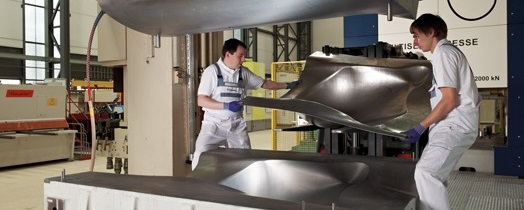High economic efficiency even in small series

Active media-based forming cannot only by applied in closed profiles. In sheet hydroforming (SHF) shaping also occurs by applying high pressure to an active medium. In particular, this process exhibits high economic potential in small series since manufacturing only requires a component-specific die; a punch is not necessary for shaping. By combining this method with further processes such as injection molding or press hardening and especially by integrating joining operations, complex components and assemblies can be manufactured more efficiently than ever before.
 Fraunhofer Institute for Machine Tools and Forming Technology
Fraunhofer Institute for Machine Tools and Forming Technology